Conveyor Belt Machine for sale
The term conveyor belt machine encapsulates a fundamental technology that has revolutionized the way we handle materials across various industries. From the early days of rudimentary belt systems to today’s advanced, automated conveyors, these machines have undergone significant evolution. Their importance cannot be overstated, especially in sectors where efficiency and speed are paramount. A prime example of their application is in Amazon’s warehouse systems, where conveyor belt machines play a pivotal role in streamlining the sorting and distribution process. This technology not only enhances productivity but also reduces manual labor, making it a cornerstone in the modern industrial landscape.
Understanding Conveyor Belt Machines
At its core, a conveyor belt machine is a mechanical system designed to transport materials from one point to another continuously. These machines consist of a looped belt that is powered by an electric motor and supported by rollers or a flat pan along its path. The basic function of a conveyor belt machine is to facilitate the movement of goods, whether it’s raw materials in a factory, packages in a distribution center, or products in a retail setting. They are essential in reducing labor costs and increasing efficiency in various operations.
Types of conveyor belt machines
Conveyor belt machines come in various types, tailored to different needs and scales of operation. Industrial conveyor belt machines are robust, designed for heavy-duty tasks in manufacturing plants and large warehouses. They can handle large volumes of goods, often in harsh conditions. Small-scale machine conveyor belts are more suitable for lighter tasks and smaller spaces, such as in small businesses or packaging facilities. Home-use models, though less common, are compact and designed for simple, everyday tasks, offering convenience and efficiency in domestic settings.
Key components
The key components of a belt conveyor machine include the belt material, which can vary depending on the application, from rubber to metal to synthetic fabrics. Motors provide the necessary power to move the belt, and their capacity is chosen based on the load and speed requirements of the system. Rollers or a flat surface support the belt and help maintain its path and tension. Control systems, which can range from simple switches to complex programmable logic controllers (PLCs), are used to manage the operation of the conveyor belt machine, allowing for adjustments in speed, direction, and sometimes even the tracking of individual items on the belt.
Industrial Conveyor Belt Machines
Industrial conveyor belt machines are the backbone of numerous manufacturing and distribution operations, distinguished by their robust construction and capability to handle heavy loads. These systems are engineered to withstand the rigors of industrial environments, often operating continuously for long hours. In manufacturing, they are integral in assembly lines, moving parts and products through various stages of production. In distribution centers, they expedite the sorting and shipping process, efficiently moving large volumes of goods.
Case study
A notable case study that highlights the effectiveness of industrial machine conveyor belt is Amazon’s warehouse system. Amazon, a global leader in e-commerce, relies heavily on advanced conveyor belt machines to manage its vast inventory and fulfill orders at an unprecedented scale. Their warehouses are equipped with sophisticated conveyor systems that sort, route, and deliver products with remarkable speed and accuracy. This system is a testament to how conveyor belt machines can transform logistical operations, enhancing productivity and reducing manual labor.
Features of industrial conveyor belts
The features of industrial conveyor belt machines are tailored to meet the demands of heavy-duty tasks. Durability is a key aspect, with belts often made from reinforced materials capable of withstanding wear and tear. The capacity of these machines is another critical feature; they are designed to carry substantial weights, which is essential in industrial settings where large and heavy items are the norm. Speed is also a crucial factor, as it determines the efficiency of the operation. High-speed conveyor belts can significantly increase throughput, ensuring that production targets are met. These features collectively make industrial conveyor belt machines indispensable in modern industrial operations.
Conveyor Belt Machines for Small Businesses and Home Use
Conveyor belt machines are not just limited to large industrial settings; they also play a significant role in small businesses and even home applications. These smaller conveyor belt machines are designed to be more compact and affordable, yet still offer the efficiency and functionality needed for various tasks. In small businesses, such as boutique manufacturing units, artisan workshops, or small-scale packaging operations, these machines can greatly enhance productivity. They are particularly useful for repetitive tasks like moving products through different stages of assembly or packaging.
In terms of applications, small conveyor belt machines are versatile. For packaging, they can be used to transport items to different packaging stations, streamlining the process and reducing manual handling. In sorting operations, these machines can help organize products by size, type, or destination, which is particularly beneficial in postal or distribution services. Small-scale manufacturing can also benefit from conveyor belt machines, as they can be used to move components along an assembly line, even in limited spaces. This adaptability makes conveyor belt machines a valuable asset for various small business operations, offering a balance between functionality and space-saving design.
Home use of belt conveyor machines, while less common, is emerging as a trend, especially among enthusiasts of DIY projects or home-based businesses. These machines can be used for organizing and handling crafts, small-scale production of goods, or even for educational purposes. The key advantage of using a conveyor belt machine in such settings is the automation of mundane tasks, allowing for more focus on the creative or critical aspects of the work. With the growing availability of compact and user-friendly models, conveyor belt machines are becoming an accessible and practical tool for small businesses and home users alike.
Buying Guide for Conveyor Belt Machines
When considering the purchase of a conveyor belt machine, several key factors must be taken into account to ensure you select the right equipment for your needs. The size of the conveyor is crucial; it must be adequate for your space and the size of the items you intend to transport. Capacity is another important consideration, as it determines the weight the conveyor can handle, which is particularly important in industrial settings. Speed is a factor that impacts efficiency – a faster conveyor can increase throughput but may require more sophisticated control systems. The material of the conveyor belt itself is also vital, as different materials are suited to different types of goods and environments.
The price range of a conveyor belt machine can vary significantly based on several factors. Firstly, the size of the conveyor impacts cost – larger conveyors are typically more expensive. The capacity it can handle also affects the price; higher capacity machines are usually costlier. The speed capabilities can influence the cost, with higher-speed systems being more expensive. The complexity of the control system can also add to the cost. The material of the conveyor belt is a factor, as specialized materials can be more costly. The brand and quality of the machine play a role in pricing, with well-known brands often commanding higher prices. Customization, if required, can also increase the cost. Lastly, the type of conveyor – whether it’s a standard model or a specialized type – can impact the price.
When looking for the right conveyor belt machine for sale, consider these 8 tips
Assess your specific needs and requirements before starting your search.
- Research different types of conveyor belt machines to understand which type suits your application.
- Research different types of conveyor belt machines to understand which type suits your application.
- Compare prices from various suppliers to ensure you get a fair deal.
- Check the warranty and support options available with the conveyor belt machine.
- Read reviews and ask for references to gauge the reliability of the machine and the supplier.
- Consider the ease of maintenance and availability of spare parts.
- Look for energy efficiency features, which can save costs in the long run.
- Don’t hesitate to ask for a demonstration or trial to see the conveyor belt machine in action.
Following these guidelines will help you make an informed decision when purchasing a machine conveyor belt, ensuring that you choose a system that meets your specific needs and offers good value for money.
Innovations and Advancements in Conveyor Belt Machine Technology
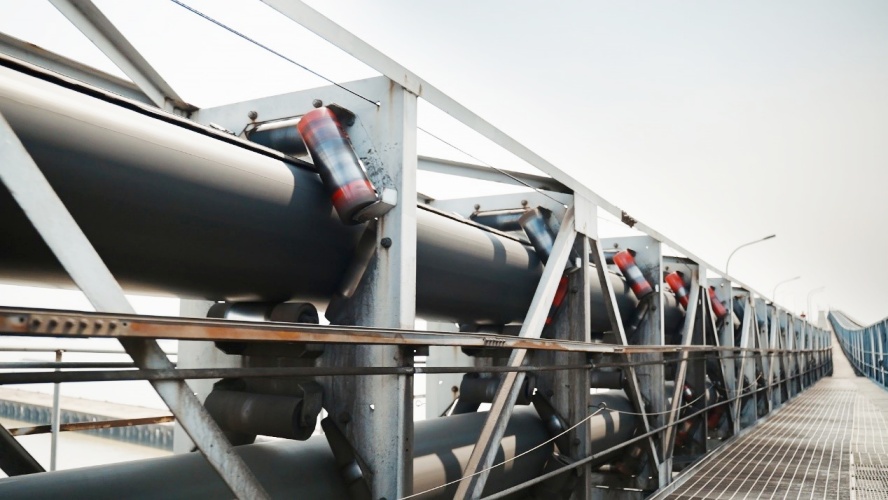
The realm of conveyor belt machine technology is continually evolving, with several latest trends shaping the future of these systems. One significant trend is the integration of advanced materials, which are making conveyor belts lighter, more durable, and less energy-intensive. These materials can withstand harsher environments and reduce the overall cost of maintenance.
Another trend is the incorporation of IoT (Internet of Things) technology. Conveyor belt machines equipped with IoT capabilities can transmit real-time data about their operation, allowing for proactive maintenance and efficiency optimization. This technology also enables better tracking of goods, which is particularly useful in complex logistics operations.
Automation is a key trend that is transforming conveyor belt machines. Automated systems can adjust their speed and routing in response to real-time demands, reducing the need for manual intervention and increasing overall efficiency. This automation extends to loading and unloading processes, where robotic systems are being integrated with conveyor belts for seamless material handling.
Smart control systems are becoming increasingly sophisticated. These systems use artificial intelligence and machine learning algorithms to predict maintenance needs and optimize conveyor belt operations. They can also adapt to varying loads and operational conditions, ensuring optimal performance at all times.
Energy efficiency is a growing focus in the design and operation of conveyor belt machines. Manufacturers are developing systems that consume less power, have reduced friction, and are more efficient in their energy use. This not only lowers operational costs but also aligns with global sustainability goals.
These advancements in machine conveyor belt technology are not only enhancing the capabilities and efficiency of these systems but are also making them more adaptable to a wide range of industrial and commercial applications. As these technologies continue to evolve, conveyor belt machines will become even more integral to various sectors, driving innovation and productivity.

Conveyor Belt Machine Manufacturers
The market for conveyor belt machines is diverse, with several leading manufacturers that have established a strong presence. These companies are known for their innovation, quality, and reliability in producing conveyor belt systems suited for a wide range of applications. Here are six popular belt conveyor machine manufacturers currently dominating the market:
Gram Conveyor:
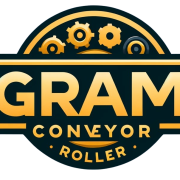
Gram is recognized for its superior qualityEliminate the strain of manual lifting, carrying, and storage with our industrial conveyor systems, which not only help in preventing workplace injuries but also significantly increase productivity.
Intralox:
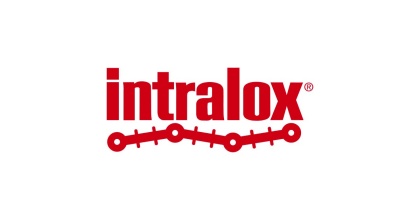
Renowned for their modular plastic conveyor belts, Intralox is a leader in providing solutions for numerous industries, including food processing, packaging, and material handling.
Dorner Conveyors:

Specializing in a variety of conveyor systems, Dorner offers custom solutions with a focus on precision and efficiency, catering to industries like pharmaceuticals, electronics, and food processing.
Hytrol Conveyor Company:
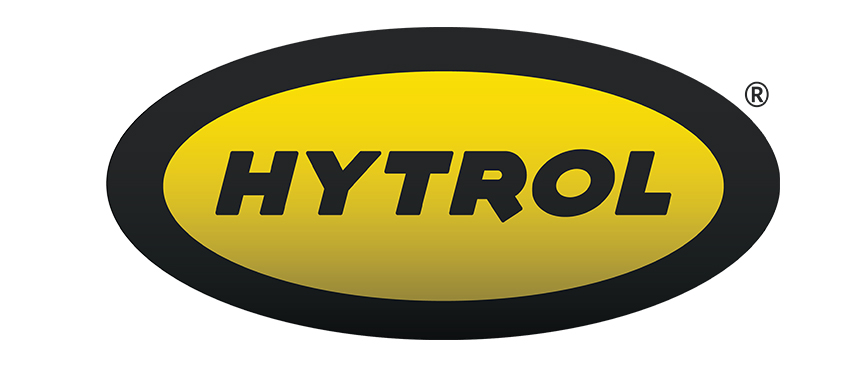
A well-known name in the conveyor industry, Hytrol provides a wide range of conveyor solutions, including both roller and belt conveyors, known for their durability and versatility.
FlexLink:

This company stands out for its automated conveyor systems, particularly in the manufacturing and assembly sectors. Their focus on modular design allows for flexible and scalable conveyor solutions.
Siemens:

A global powerhouse in various technology sectors, Siemens offers advanced conveyor belt machine systems, particularly excelling in integrated automation and drive technologies.
Bosch Rexroth:

With a strong focus on automation and efficiency, Bosch Rexroth provides high-quality conveyor systems that are widely used in industries such as automotive, electronics, and material handling.
Each of these manufacturers specializes in different types of conveyor systems, catering to the specific needs of various industries. For instance, Intralox’s modular belts are highly sought after in the food processing industry for their ease of cleaning and maintenance. Dorner Conveyors is known for its precision and small-scale conveyor systems, ideal for delicate and precise operations. Hytrol is favored for its robust and versatile systems, suitable for a wide range of industrial applications.
The diversity among these conveyor belt machine manufacturers ensures that there is a solution available for virtually any material handling need. Whether it’s a small, specialized operation or a large-scale industrial application, these manufacturers have the expertise and technology to provide efficient and reliable conveyor systems.
Conveyor Belt Machine HS Code and Import-Export Considerations
The Harmonized System (HS) code is a standardized numerical method of classifying traded products, and it plays a crucial role in international trade. For conveyor belt machines, the HS code is essential for identifying the product in customs documentation and determining the tariffs applicable during import or export. The specific HS code for conveyor belt machines can vary depending on the country and the specific type of machine. However, they generally fall under a category that includes various types of machinery used in material handling.
Understanding the correct HS code for conveyor belt machines is vital for businesses involved in international trade. This code not only affects the tariff rates but also compliance with trade regulations and customs clearance procedures. Incorrect classification can lead to delays in shipment, penalties, or even seizure of the goods by customs authorities. Therefore, it’s important for exporters and importers to accurately determine the HS code of their conveyor belt machines to ensure smooth customs processing and to avoid unexpected costs.
The HS code for conveyor belt machines also plays a role in trade data analysis. Governments and businesses use this data to track the import and export of goods, analyze market trends, and make informed decisions about trade policies and strategies. For businesses, this information can be crucial for assessing market demand, competition, and potential growth opportunities in different regions.
Additionally, the HS code is used in trade agreements and negotiations. Countries may agree on tariff concessions for certain products, including conveyor belt machines, based on their HS classification. This can have significant implications for the pricing and competitiveness of these machines in international markets.
The HS code is a key element in the international trade of conveyor belt machines, affecting everything from customs duties and compliance to market analysis and trade policy. Businesses involved in the manufacturing, export, or import of these machines need to be well-informed about the relevant HS codes to navigate the complexities of international trade effectively.
Safety and Maintenance of Conveyor Belt Machines
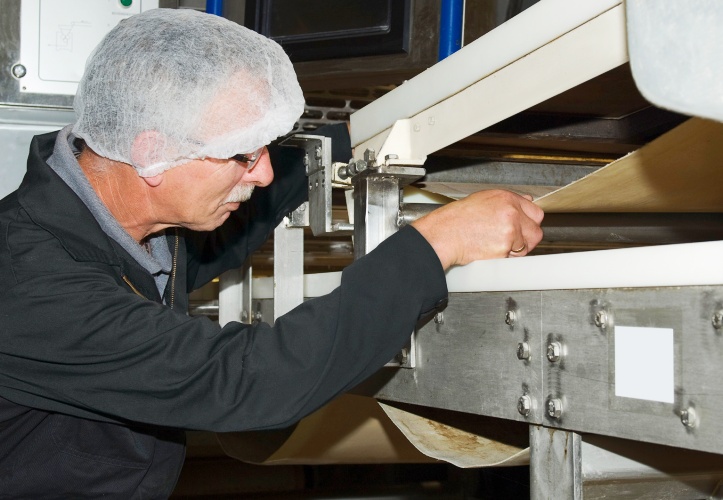
Ensuring the safety and proper maintenance of conveyor belt machines is paramount for their efficient and long-lasting operation. Adhering to established safety protocols is crucial to prevent accidents and injuries. Best practices include regular safety training for operators, ensuring all safety guards and emergency stop buttons are in place and functional, and enforcing a strict policy against climbing, sitting, or walking on the conveyor belt. Additionally, it’s important to keep the area around the conveyor belt machine clear of debris and to use appropriate signage to warn about potential hazards.
Maintenance is equally important to prolong the life and efficiency of conveyor belt machines. Here are six essential maintenance tips:
- Regular Inspections: Conduct routine inspections to check for wear and tear, especially on the belt and rollers. Look for signs of fraying, cracks, or other damages on the belt and ensure rollers rotate freely without obstruction.
- Lubrication: Regularly lubricate moving parts, such as bearings and rollers, to reduce friction and prevent wear. Use the correct type of lubricant as specified by the manufacturer.
- Belt Alignment and Tension: Check the alignment and tension of the conveyor belt periodically. Misaligned or improperly tensioned belts can lead to inefficiencies and increased wear.
- Cleanliness: Keep the conveyor belt and its components clean. Accumulation of dust, debris, or spilled materials can affect the performance and potentially cause breakdowns.
- Electrical and Control Systems Check: Regularly inspect the electrical and control systems to ensure they are functioning correctly. This includes checking for loose wires, malfunctioning sensors, and proper operation of the control panel.
- Record Keeping: Maintain a log of all inspections, maintenance activities, and repairs. This record-keeping helps in tracking the health of the conveyor belt machine over time and planning preventive maintenance.
Adherence to these safety and maintenance protocols for machine conveyor belts not only ensures the safety of the operators but also maximizes the efficiency and lifespan of the equipment, leading to reduced downtime and cost savings in the long run.
Environmental Impact and Sustainability of Conveyor Belt Machines
The environmental impact of conveyor belt machines is an increasingly important consideration in their design and operation. Traditionally, these machines have been significant energy consumers, especially in large-scale industrial applications. The energy used to power conveyor belt machines contributes to greenhouse gas emissions, particularly if the energy source is fossil fuels. Additionally, the manufacturing and disposal of conveyor belts, especially those made from non-recyclable materials, can have environmental implications, including resource depletion and waste management challenges.
In response to these concerns, there has been a growing focus on developing sustainable practices and eco-friendly models in the conveyor belt machine market. Manufacturers are now producing energy-efficient models that consume less power and have a smaller carbon footprint. This is achieved through the use of energy-efficient motors, improved belt designs that reduce friction and resistance, and the integration of renewable energy sources like solar power in conveyor system operations.
Another aspect of sustainability is the use of eco-friendly materials in conveyor belts. There is an increasing trend towards using recyclable or biodegradable materials for belts, which helps in reducing waste and the environmental impact of disposal. Some manufacturers are also exploring the use of reclaimed or recycled materials in the construction of belt conveyor machines.
Additionally, modern conveyor systems are being designed with smart technologies that optimize energy use and reduce unnecessary operation. These systems can adjust their speed and power consumption based on the real-time load, thereby minimizing energy wastage.
The adoption of these sustainable practices not only helps in reducing the environmental impact of conveyor belt machines but also offers long-term cost savings to businesses through reduced energy bills and potential tax incentives for using green technologies. As environmental concerns continue to gain prominence, the shift towards eco-friendly and sustainable conveyor belt machines is likely to become a standard in the industry.
Get premium conveyor belts tailored to your needs.
Case Studies and Real-World Applications of Conveyor Belt Machines
The real-world applications of belt conveyor machines are vast and varied, demonstrating their versatility and impact on efficiency and productivity across different sectors. One of the most notable examples is Amazon’s use of sophisticated conveyor systems in their fulfillment centers. Amazon’s conveyor belt machines are integral to their operations, handling the sorting, transporting, and packaging of products at an unprecedented scale. These systems are designed to handle a vast array of products with varying sizes and weights, showcasing the adaptability of conveyor technology. The efficiency brought by these conveyor systems is a key factor in Amazon’s ability to offer fast shipping times, which has become a cornerstone of their business model.
Another significant application is seen in the manufacturing sector. Automotive manufacturers, for instance, rely heavily on conveyor belt machines for the assembly line production of vehicles. These conveyors move parts and assemblies through various stages of production, from the initial assembly of components to the final stages of inspection and testing. The precision and speed offered by these conveyor systems significantly enhance productivity and allow for the mass production of vehicles.
In the food and beverage industry, conveyor belt machines play a crucial role in processing and packaging. They are used for tasks ranging from the transport of raw ingredients to the packaging of finished products. These conveyor systems must adhere to strict hygiene and safety standards, often incorporating features like easy-to-clean surfaces and food-grade materials.
The mining industry also benefits from the use of conveyor belt machines, where they are used for the transport of raw materials such as coal and ore. These conveyors are built to withstand harsh conditions and handle large volumes of materials, playing a critical role in the efficiency of mining operations.
In the agricultural sector, conveyor belt machines are used for the sorting and packaging of produce. They help in efficiently handling large quantities of agricultural products, reducing labor costs, and increasing the speed of packaging and distribution.
These case studies highlight the impact of conveyor belt machines on efficiency and productivity in various sectors. By automating the movement of goods and materials, these machines not only streamline processes but also contribute to significant cost savings and operational efficiencies. The continued innovation and adaptation of conveyor belt technology ensure its relevance and indispensability in numerous industries.
FAQs about Conveyor Belt Machine
The cost of a conveyor belt varies widely based on several factors, including its size, material, design, and the specific requirements of the application it’s intended for. For standard conveyor belts used in light to medium-duty applications, prices can range from a few hundred to several thousand dollars. For instance, a simple flat belt conveyor can cost around $3,000 to $5,000, while more complex systems, such as those used in mining or heavy manufacturing, can run into tens of thousands of dollars. Customizations, such as advanced control systems, specialized materials for the belt, or specific dimensions, can further increase the cost. Additionally, operational costs, including maintenance and energy consumption, should also be considered when evaluating the overall expense of a conveyor belt system.
Belt conveyor equipment refers to the machines and devices that make up a belt conveyor system. This system typically includes the conveyor belt itself, which is a continuous loop of material that moves over two or more pulleys. The equipment also encompasses motors that power the belt, rollers or pulleys that support and guide the belt, and the frame that holds the entire assembly. Advanced systems may include additional components like sensors, control panels, and emergency stop devices. Belt conveyor equipment is used in various industries to transport materials and products from one point to another, either in a straight line or through changes in elevation or direction. The design and complexity of this equipment vary based on the application, such as light-duty tasks in retail or heavy-duty operations in mining and manufacturing.
There are numerous types of conveyors, each designed to meet specific material handling needs. The most common types include:
Belt Conveyors: Use a continuous belt for transporting materials.
Roller Conveyors: Utilize rollers to move goods, ideal for heavy loads.
Chain Conveyors: Employ a chain to move products, often used in heavy-duty industrial applications.
Screw Conveyors: Use a helical screw element for moving granular or loose material.
Pneumatic Conveyors: Transport materials through tubes using air pressure.
Vibratory Conveyors: Use vibration to move materials.
Overhead Conveyors: Typically used in assembly lines, where products hang from a conveyor.
Bucket Elevators: Designed to move materials vertically in buckets.
Magnetic Conveyors: Use magnetic force to move ferrous materials.
Each type has its unique advantages and is chosen based on factors like the nature of the material being transported, the required speed of transport, the distance and direction of movement, and the specific industry requirements.
The cost of a conveyor belt for a factory depends on the scale of operations and specific requirements of the manufacturing process. For a basic conveyor belt system in a small to medium-sized factory, prices can start from around $5,000 and can go up to $50,000 or more for a larger, more complex system. Factors that influence the cost include the length and width of the conveyor, the type of material it’s made from, the load capacity, the speed at which it operates, and any additional features like adjustable speeds, integrated sensors, or customized design. For large-scale industrial applications, such as those in automotive manufacturing or mining, the cost can be significantly higher due to the need for heavy-duty materials, larger dimensions, and more advanced technology. It’s important for factories to conduct a thorough needs assessment and get quotes from multiple suppliers to find a conveyor belt system that meets their requirements at a reasonable cost.
Last Updated on June 21, 2024 by Jordan Smith
Jordan Smith, a seasoned professional with over 20 years of experience in the conveyor system industry. Jordan’s expertise lies in providing comprehensive solutions for conveyor rollers, belts, and accessories, catering to a wide range of industrial needs. From initial design and configuration to installation and meticulous troubleshooting, Jordan is adept at handling all aspects of conveyor system management. Whether you’re looking to upgrade your production line with efficient conveyor belts, require custom conveyor rollers for specific operations, or need expert advice on selecting the right conveyor accessories for your facility, Jordan is your reliable consultant. For any inquiries or assistance with conveyor system optimization, Jordan is available to share his wealth of knowledge and experience. Feel free to reach out at any time for professional guidance on all matters related to conveyor rollers, belts, and accessories.



